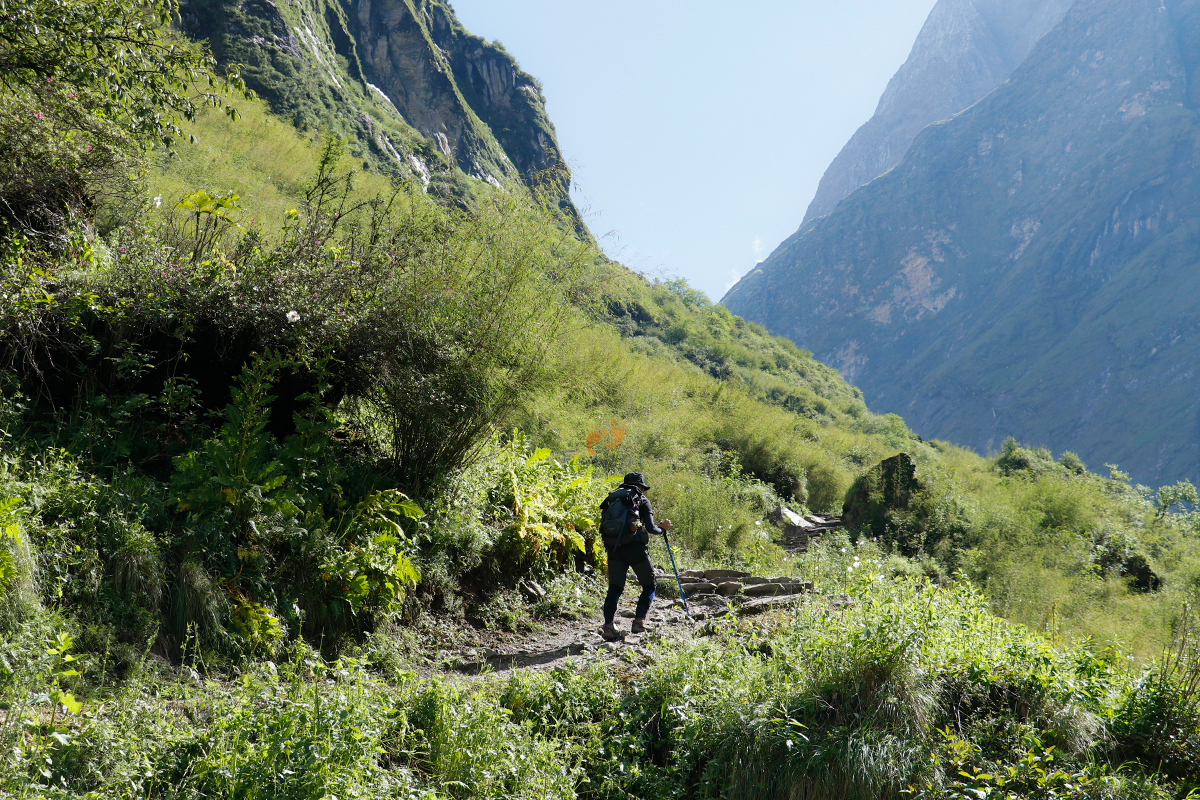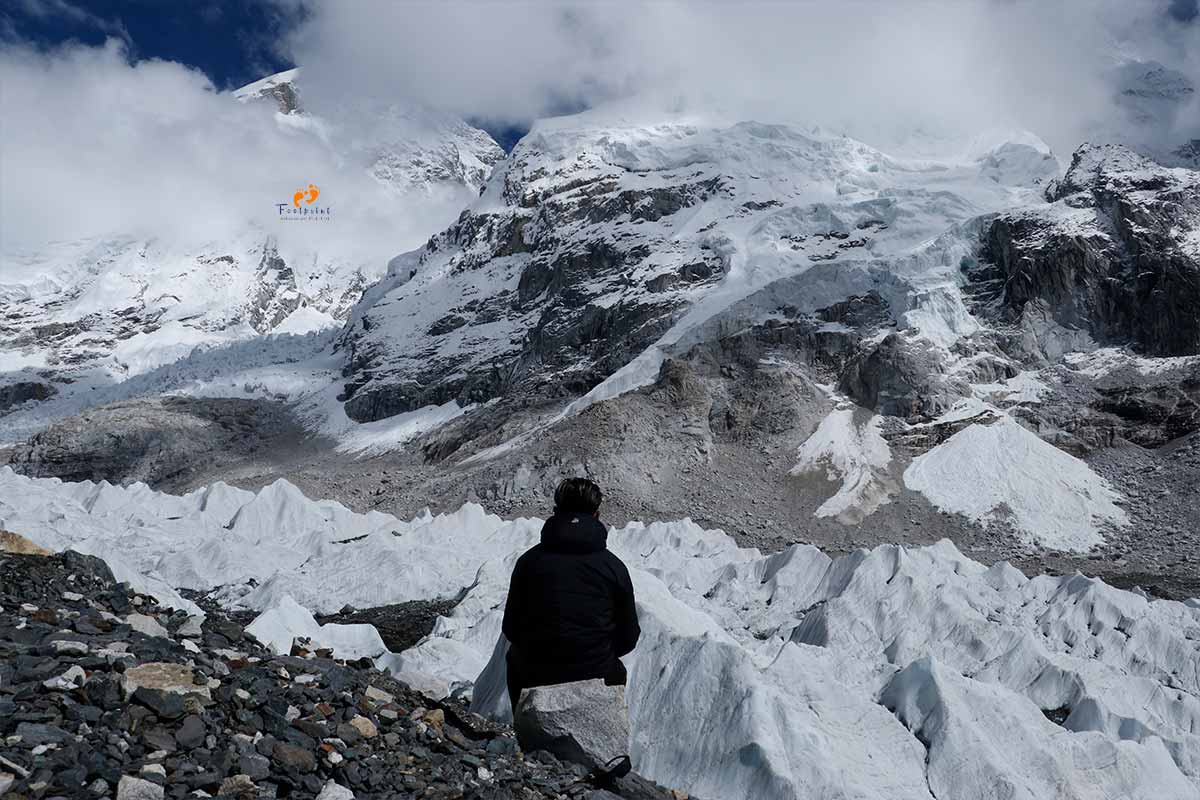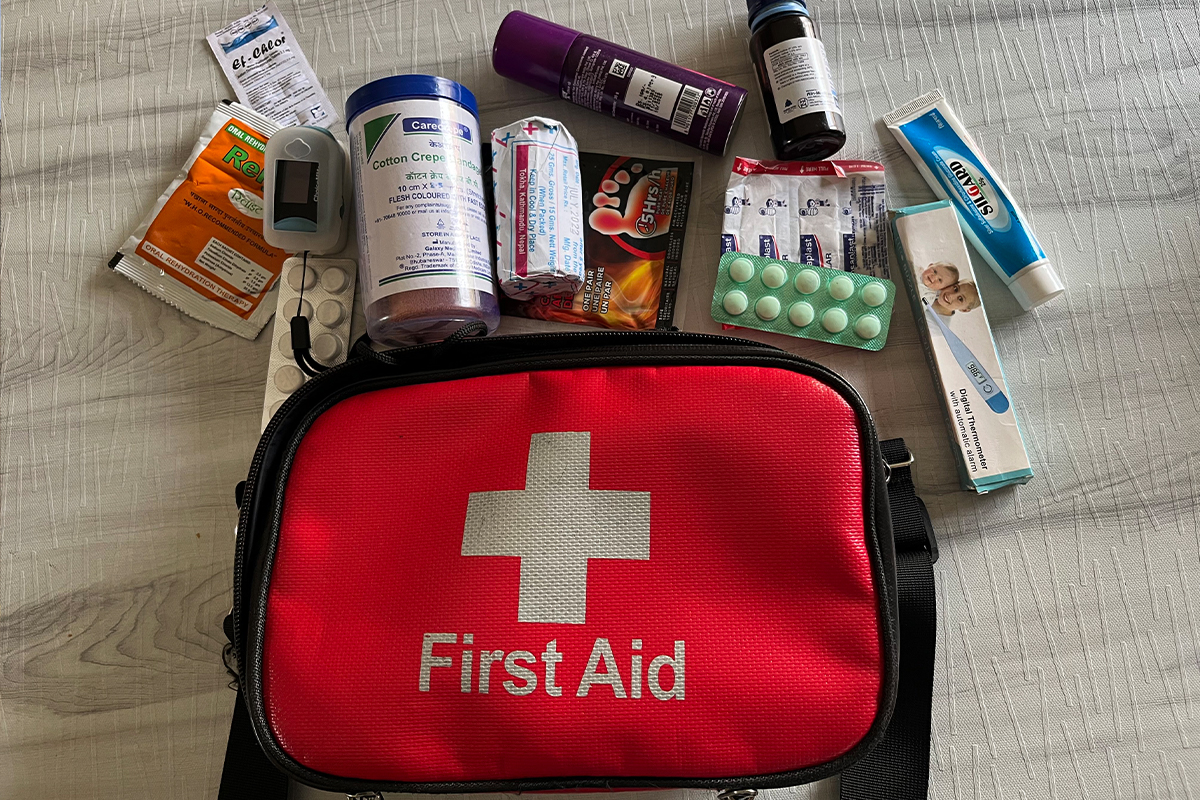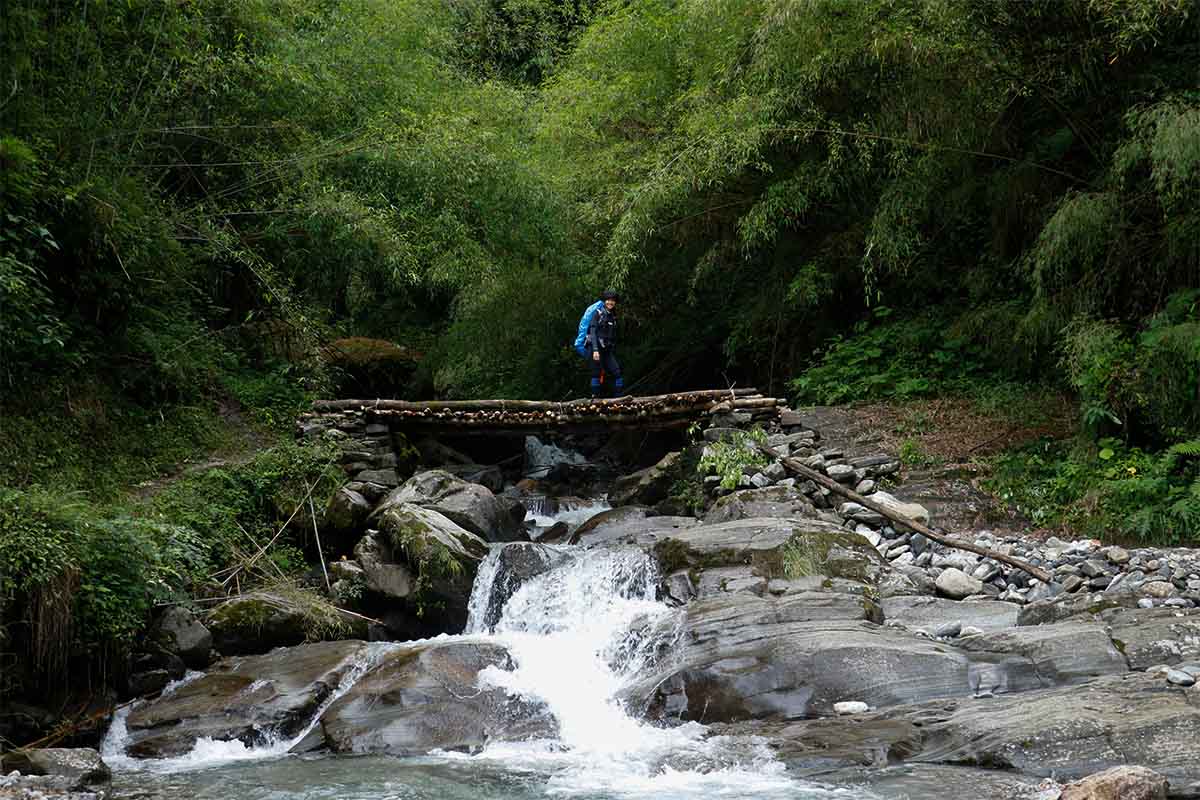Overview of trekking in Nepal
Trekking in Nepal offers some of the most remarkable mountain adventures on earth. The trekking trails pass through an amazing landscape, snow-capped peaks, lush forests, and picturesque villages that render your trek unforgettable. You will also find famous routes here, such as the Everest Base Camp Trek, which leads you to the base of the world's tallest mountain, and the Annapurna Circuit, an exciting route lined with various scenery and cultural experiences.
Nepal offers all types of trails, from difficult, high-altitude trails for experts to softer, gentler ones for beginners. Besides, one often meets friendly locals and comes across rich traditions and breathtaking views along the way, a perfect blend of natural beauty and cultural discovery.
The time you invest in good trekking preparations allows you to focus on the journey itself. Good preparation enhances your chances of enjoying the trek and your ability to act confidently during any challenges.

Why Preparation Matters
- Altitude Readiness: Nepal's high altitudes can expose you to altitude sickness; a developed body will handle the change and reduce the risks involved.
- Physical endurance: Most trekking routes require walking uphill for long distances through uneven paths; physical fitness makes it easier to enjoy your trip without getting tired easily.
- Safety and Emergency Preparedness: Basic first aid and necessary medication on hand prepare you for minor injury or health issues during the trip.
- Weather Adaptability: The weather in Nepal can be pretty unpredictable at times, especially in the mountain areas. Wearing layers and having waterproof gear provide not only comfort but also safety.
- Packing Efficiently: Packing just enough gear—from a trekking pole to water purifiers—saves you from having to lug around more than you need in your luggage.
- Cultural Awareness: Awareness of local customs and traditions upgrades your experience and makes your interaction with locals respectful.
- Cost and Time Efficiency: Planning helps one correctly budget for permits, guides, and accommodations rather than facing surprise costs or delays.
- Better Experience: The more well-prepared, the better able one will be to enjoy scenery and culture rather than stressing about all the logistics.
Choosing Your Trek
There's a trek in Nepal to suit every taste and experience—from a few days to a month or more. Each of the following treks has something unique to offer. Here's an overview of some options and what you need to know about timing, permits, and essential paperwork.

Popular Treks
- Everest Base Camp (EBC): The most iconic trek in the world, offering great views of Mt. Everest and other surrounding peaks. It is the best trek for beginners in Nepal for those seeking a challenging high-altitude experience combined with a cultural glimpse into the Sherpa way of life.
- Annapurna Circuit: This trek is famous for its diversity in landscapes. It takes one through forests, mountain villages, and high passes with stunning views of the Annapurna range. It is popular because of its varied scenery and accessibility for beginner to intermediate trekkers.
- Langtang Valley Trek: This is a shorter and less crowded trek than Everest. Langtang is ideal for those searching for scenic journeys bereft of high altitude extremes, as in Everest. Beautiful landscapes abound on this trek, including forests, rivers, and a close-up look at the culture influenced by Tibetans.
- Poon Hill Trek: Poon Hill is a type of trek that suits beginners best. It is relatively shorter and has decent sunrise views over the Annapurna and Dhaulagiri mountains. Comparatively easier to trek than other treks, Poon Hill promises a taste of the magnificent Nepal mountain scenery.
Recommendation Read:Popular Winter Treks in Nepal
Picking the Best Time of Year to Go
- Autumn (September to November): This is the peak season. The skies are clear, and the weather is stable, providing excellent mountain views. The trail may get crowded, but this is the best time considering all the parameters: visibility, weather, crowd, and experience.
- Spring (March to May): When the rhododendrons bloom, temperatures are mild. Spring can also be one of the best times to trek. The view is very good, although some areas at high altitudes may still have snow left.
- Winter (December to February): The number of trekkers going during the winter—December, January, and February—is generally less than in the other seasons. However, it is much colder, particularly in high-altitude areas. One can trek during winter in lower elevations and be adequately prepared for cold weather.
- Monsoon (June to August): This is the low season because of heavy rain and muddy trails. It's considered the worst time of year to trek, although trekking during this season does have its advantages in the rain-shadow regions. Places like Mustang and Dolpo are relatively dry and receive less rain, making this an ideal time to visit.
Visit our blog for more details on the Best Time To Trek in Nepal.
Permits and Paperwork
Buying appropriate permits and planning for the best season ensures a hassle-free, enjoyable trek tailored to your experience level.
Physical and Mental Preparation
Proper physical and mental preparation can make a difference in Nepal trekking. From developing stamina to packing wisely, here are key steps to prepare for the adventure.
Fitness Tips for Trekking in Nepal
- Cardio Training: Running, swimming, cycling, or even hiking with a loaded backpack—the result of such activities keeps the heart going, which is very much needed on long hours of uneven trails.
- Muscle Building: Squats, lunges, and planks strengthen your legs and core muscles. These exercises help you power up steep climbs and downhill.
- Flexibility and Balance: Add yoga and stretching to your regimen to bolster flexibility and balance. This will help you navigate rocky terrain, thereby minimizing injury.
- Practice Hikes: Fold in local trail practice hikes to get used to walking with a loaded backpack, build confidence, and harden your body in preparation for the rigors ahead.
- Cross-Training: Add hiking, stair climbing, or resistance training to your regimen to vary your workout routine and target different muscle groups.
- Rest and Recovery: Allow adequate recovery time between exercise sessions to avoid fatigue and prepare your body for the trek.
Fitness For Everest Base Camp Trek
High Altitude Acclimatization
- Gradual Acclimatization: Go up to higher altitudes slowly, allowing the organism to get used to less oxygen in the air. This minimizes the possibility of getting altitude sickness.
- Hydrate: Drink 3-4 liters of water daily to keep your body well-hydrated. Hydration is one of the key elements for acclimatization and overall performance while on the trail.
- Listen to Your Body: Be sensitive to symptoms like headaches, dizziness, or nausea. These might be symptoms of altitude sickness. If you experience these, lower the altitude level immediately.
- Altitude Training: If possible, expose yourself to higher elevations before the trip to give your body time to adjust to the minimal oxygen level, thereby ensuring better performance during the trek.
- Monitoring Progress: Pay close attention to how you feel during the uphill movements; rest or turn back to a lower, safer elevation should you experience any concerning signs or symptoms.
- Local Guidance: You must consult a physician or professional guide about how your body acclimatizes to altitude and the necessary medication.
The above preparation tips will prepare you physically and mentally for the breathtaking yet demanding landscapes you will encounter during your expedition to Nepal.
Packing Essentials: What to Bring and What to Leave Behind

Must Bring
1. Clothing Layers
- Moisture-wicking base layers
- Insulating mid-layers (fleece or down jackets)
- Waterproof and windproof outer layer (jacket)
- Warm hat and gloves
- Hiking socks (preferably moisture-wicking)
2. Footwear
- Sturdy hiking boots with ankle support
- Lightweight camp shoes or sandals
- Moisture-wicking socks
3. Backpack Essentials
- A comfortable daypack (30-40 liters for day hikes; 50-60 liters for multi-day treks)
- Sleeping bag (rated for the season/temperature)
- Trekking poles (optional but helpful for stability)
4. Health and Safety Items
- First aid kit (band-aids, antiseptics, pain relievers)
- Personal medications (including altitude sickness medication)
- Sunscreen and lip balm with SPF
- Insect repellent

5. Hydration and Nutrition
- Reusable water bottle or hydration bladder
- Water purification method (tablets or portable filter)
- High-energy snacks (nuts, energy bars, dried fruits)
6. Navigation and Tools
- Map and compass or GPS device
- Headlamp or flashlight with extra batteries
- Multi-tool or knife
Optional Items to Consider Bringing
1. Electronics
- Camera for capturing stunning views
- Portable charger or power bank
- Phone with offline maps and trekking apps
2. Comfort and Convenience
- Lightweight travel towel
- Small journal or book for downtime
- Compact camping chair or sitting pad
3. Personal Items
- Toiletries (biodegradable soap, toothbrush, toothpaste)
- Quick-dry clothes
- Lightweight sleeping bag liner
What to Leave Behind
1. Excessive Clothing
- Heavy or bulky clothing items not suitable for layering
- Cotton clothing (which retains moisture and takes longer to dry)
2. Unnecessary Electronics
- Non-essential gadgets (like laptops or tablets)
- Multiple chargers or heavy power banks
3. Heavy Gear
- Oversized backpacks that are difficult to carry
- Bulky cooking equipment if not necessary (check if provided on treks)
4. Valuables
- Expensive jewelry or unnecessary valuables
- Large amounts of cash (consider using cards when possible)
5. Non-Essential Comfort Items
- Excessive snacks or food items that add weight
- Books or materials that are not lightweight or compact
6. Items Not Suitable for Trekking
- High-heeled shoes or sandals that aren't suitable for walking
- Hairdryers or other bulky personal care items
Health and Safety
Health and safety are the main concerns during trekking to Nepal for an enjoyable experience. Here are the key considerations:
Hydrating and Snacking on the Trail
1. Hydration Guidelines:
- Drink plenty of water throughout the day—at least 3-4 liters.
- Take a reusable water bottle or hydration bladder regularly for easy sipping.
- Always use water purification methods such as tablets or filters if the water is unsafe.
2. Nutrition Fundamentals:
- Bring high-energy snacks to maintain your energy throughout the day. These may include nuts, trail mixes, energy bars, and dried fruits.
- Choose light and nutritious but non-perishable and easy-to-carry food
- If you go trekking with a guide, discuss meal options with him and your preferred dietary alternatives so that your nutritional needs will be met during a trek.
3. Time of Meals:
- Establish a food intake pattern—meals and snacks—so energy levels remain stable throughout the day.
- Eat before you're hungry. Maintaining energy is always easier when it doesn't get too low.
First Aid Basics
1. Items to Always Carry in Your First Aid Kit:
- Adhesive bandages, gauze pads, and medical tape to cover cuts and blisters.
- Antiseptic wipes or creams to clean wounds.
- Pain relievers such as ibuprofen or acetaminophen for aches and headaches.
2. Altitude Sickness Prevention:
- Bring medications like Diamox (acetazolamide) if prone to altitude sickness.
- Know the symptoms of altitude sickness: headaches, nausea, dizziness, and responses.
3. Emergency Contacts:
- Have a list of emergency contact numbers, including local emergency services, a guide to lead your treks, and emergency contacts in your country of residence.
- Have a PLB/personal locator beacon or satellite phone in emergencies, especially when remote trekking.
Responsible Trekking and Respect for the Environment
1. Leave No Trace Principles:
- Follow the Leave No Trace principles to minimize your impact on the environment. Pack out all trash, including food waste and packaging.
- Avoid picking plants or disturbing wildlife along the trails.
2. Respect Local Cultures:
- Be sensitive to local customs and traditions, particularly when crossing villages or sacred sites.
- Always ask for permission before taking any pictures of people or their property.
3. Wildlife Safety:
- Keep a safe distance from wildlife, and do not feed the animals. This will help them retain their instincts and minimize the chances of having an accident.
- Understand the local fauna to know which animals to avoid.
4. Travel on designated trails:
- Follow established trails. This will help prevent erosion and protect fragile ecosystems. Deviating from established trails will damage the environment and habitat.
Good health and safety on the trail mean an improved experience and a better contribution to Nepal's environment and local communities.
Final Thoughts
The last tip to remember while getting ready for trekking in Nepal with Footprint Adventure is to enjoy the spirit of adventure and understand special route conditions, including altitude heights and diversified landscapes. Keep your body hydrated and nourished during the time on the trail; even though Footprint Adventure provides meals, taking additional high-energy snacks is highly recommended. Cultural engagement on a local level—community interactions and respect for tradition—enriches your journey.
Pack light, keeping only lightweight and essential gear; communicate openly with your guides about your pace and well-being. Finally, be prepared for altitude changes by following tips on acclimatization and listening to your body. With these tips for trekking in Nepal in mind, you are set to marvel at the breathtaking beauty and rich culture that the Dolpo region has in store, creating many unforgettable memories along the way.
Ready to go on your unforgettable adventure with Footprint Adventure? Book your trek today!
FAQs
How to prepare for trekking in Nepal?
Preparing one's physique through cardiovascular workouts and muscle strengthening is a must when trekking in Nepal. Also, the body will be gradually acclimatized to altitude, proper fluid intake will be needed, and an adequate supply of materials such as a good-quality backpack and boots will be needed. The equipment one needs besides a permit on all treks is knowledge of the weather conditions for an ideal trek.
What are the rules for trekking in Nepal?
Trekking in Nepal must be done according to customary regulations and in an environmentally friendly manner. Obtain all required permits for your trek, stick to the various trails, pack out all litter, and do not disturb the wildlife. Be considerate of the customs of local people; dress modestly, particularly in villages; and respect people by asking for permission before photographing them.
How do I look good while trekking?
Good-looking trekking is all about choosing functional, stylish clothing. Wear moisture-wicking, breathable fabrics offering comfort and motion in the most vital areas of your body. Companies like Kathmandu and Sherpa Adventure Gear combine fashion with functionality in trekking apparel. Wearing multiple layers will do the trick if the temperature isn't very friendly, and complete your get-up with a stylish hat and sunglasses.
What backpack is best for trekking in Nepal?
If you are going trekking in Nepal, a good backpack is of immense importance. Popular brands like Everest and Himalaya are renowned for making high-quality, comfortable trekking backpacks. The capacity is about right: between 40 and 70 liters. Adjustable straps, a padded hip belt, and multiple compartments for storing things are necessary. Make sure you pick the right fit and comfortable one to cushion your body while negotiating the trails.
How fit do you need to be to trek in Nepal?
The required fitness level depends on the difficulty of the trek one has taken. For most of the popular routes, a medium fitness level is sufficient. Brands offering guided treks include Nepal Trekking and Adventure GeoTreks, which offer guided treks for different levels of fitness, so you can choose an appropriate trek according to your capability. Regular cardio and strength training can help prepare you for the demands of trekking, especially at higher altitudes.







